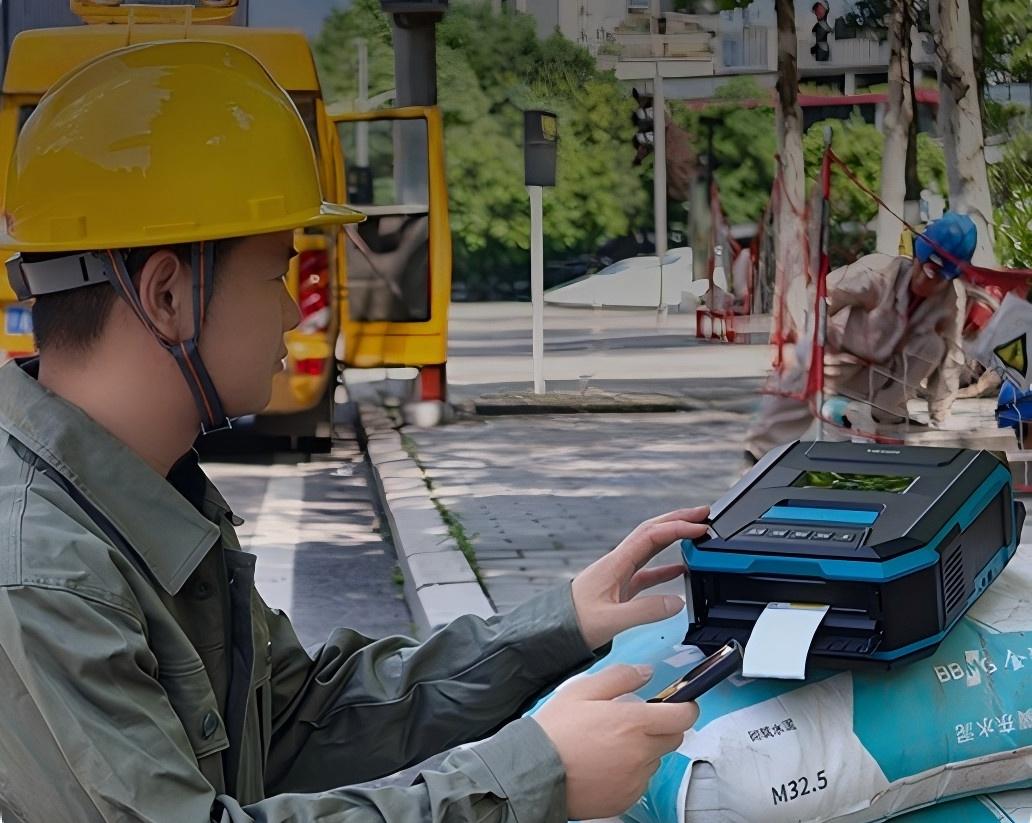Smart Telecom Asset Management: RFID Solutions Combined with Portable Label Printers
In the communications industry, key assets such as base stations, equipment rooms, and optical cables constitute the industry’s lifeline. These assets are numerous, widely distributed, and range from urban cores to remote mountainous areas. They also require frequent maintenance and upgrades. Efficiently managing these critical assets has always been a core challenge for communications companies.In the telecommunications industry, assets such as base stations, machine room equipment, and optical cable lines are like the “capillaries” of the industry’s operation – they are numerous, widely distributed, ranging from urban cores to remote mountainous areas, and are accompanied by frequent maintenance and upgrade iterations. How to manage these key assets efficiently has always been a core challenge faced by communication enterprises.
Traditional asset management methods rely on paper ledgers or Excel to record assets. This not only reduces inventory efficiency and makes data accuracy difficult to guarantee, but is also prone to data entry errors. It’s difficult to track information such as equipment whereabouts, maintenance records, and operating status, making it difficult to trace lost or damaged assets. Outdoor base station labels are easily damaged by weather, and densely packed equipment in equipment rooms is difficult to scan efficiently. This traditional model is proving inadequate for large-scale communications asset management.The traditional management approach relies on paper ledgers or Excel to record assets, which not only leads to low inventory efficiency but also is prone to input errors. Information such as the whereabouts of equipment, maintenance records, and operational status is difficult to track in a timely manner, and it is hard to trace assets after they are lost or damaged. Outdoor base station tags are prone to damage due to weather conditions, and the dense equipment in the machine room is difficult to scan efficiently. The traditional management mode is no longer able to meet the industry’s demands.
At present, “portable label printing + RFID solutions” are gradually becoming a new trend in communication asset management, effectively enhancing management efficiency and asset visualization levels.

Portable Label Printing: Generate Unique Identification For Assets On-site
Compared with fixed label printers, the core advantage of handheld portable label printers lies in their flexibility. Operation and maintenance personnel can carry them to the base station or the machine room site to print labels for new equipment on the spot.
- Strong durability: The label material is waterproof, scratch-resistant and heat-resistant. Even in outdoor high-temperature exposure or rainy and snowy conditions, the information remains clear.
- Reduce repetitive processes: New equipment can be directly labeled on site.
- Complete information record: Equipment model, installation location, serial number and other information can be simultaneously entered into the asset management system, so that asset information can be entered once and traced throughout the entire process.
RFID: The “Dynamic Tracker” for Asset Management
RFID (Radio Frequency Identification) technology reads tag information through wireless signals without the need for precise alignment. The reading distance can reach 3 to 10 meters. It can batch read the information of dozens of assets at one time and upload it to the management system in real time.
- Efficient inventory taking: Previously, it took half a day to take inventory of hundreds of devices in the computer room. Now, with RFID devices, it can be completed in just one round.
- Full life cycle management: From procurement, installation, maintenance to scrapping, the entire process data records can be queried, enhancing the visualization and traceability capabilities of assets.
- Operation and maintenance support: During maintenance, simply scan the RFID tag to obtain the historical maintenance records of the equipment, reducing misoperation and repetitive maintenance.
- Visualization capability: Combined with GIS or backend database, asset distribution maps can be generated to achieve dynamic monitoring and intuitive presentation.

Portable Printing + RFID: A Combination Solution That Doubles Efficiency
The effect of using printers or RFID alone is limited, The combination of the two can achieve full coverage of the asset management process:
- Generate RFID labels on-site using a portable printer.
- Attach the labels to the target assets.
- Use an RFID reader to collect and upload data in batches.
- The system automatically generates inventory and maintenance reports.
Application example: In optical cable management, portable printers print RFID labels and attach them to the joint boxes. Subsequent maintenance personnel only need to scan the labels to quickly retrieve the optical cable route and splicing time information, increasing the repair efficiency by approximately 50%.

Typical Application Scenarios
1. Base station asset management: RFID Improves Remote Inventory Efficiency
Base station equipment is mostly located in remote areas. Traditional inventory checks require climbing iron towers or entering machine rooms, which is inefficient and risky.
Optimization plan: When installing new equipment on site, directly attach RFID labels. For subsequent inventory checks, there is no need to climb a tower; just stand on the ground and scan. The inventory efficiency is increased by approximately 3 to 5 times.
2. Computer room equipment management: Portable label printing ensures refined control
The servers and switches in the computer room are densely distributed. Traditional inventory checks require power off and are prone to missed scans.
Optimization plan: Use anti-metal RFID labels and combine them with portable printers to modify tag information on-site to achieve non-stop inventory taking. Installing an RFID gateway can monitor the movement of devices in real time, automatically alarm and enhance the security of assets.
3. Optical cable maintenance management: RFID accelerates fault location
Outdoor optical cables are widely distributed, and traditional fault location is time-consuming.
Optimization plan: Attach RFID labels to the optical cable joint boxes to record the route and splicing time. Maintenance personnel can obtain historical fault records by scanning the labels, and the fault location time is reduced by approximately 50%.
Implementation Effects And Advantages
- Efficiency improvement: In base stations and equipment rooms, efficiency has increased by 70%–90%. In the optical cable repair and location phase, fault handling speed has increased by approximately 50%.
- Cost reduction: Labor costs have been significantly reduced, with the asset loss rate dropping from 8% to below 1%. RFID labels have a lifespan of 5–8 years, reducing recurring maintenance and travel expenses.
- Management norms: Assets are traceable throughout their entire lifecycle, meeting audit and recordkeeping requirements. Data accumulation supports full asset lifecycle traceability, meeting audit compliance, and providing a basis for operational and maintenance decisions such as expansion and replacement.
Summary
For telecommunications companies, irregular asset management not only increases costs but also impacts operational efficiency. The portable label printing + wireless RFID solution effectively addresses the traditional challenges of fragmentation, inefficiency, and difficulty in traceability. This solution can be piloted initially in typical scenarios, such as base stations or equipment rooms, before being gradually expanded to full-process management. Currently in practical use by some operators and equipment manufacturers, its efficiency, traceability, and intelligent capabilities have proven valuable, and it is expected to become a mainstream model for telecommunications asset management.

